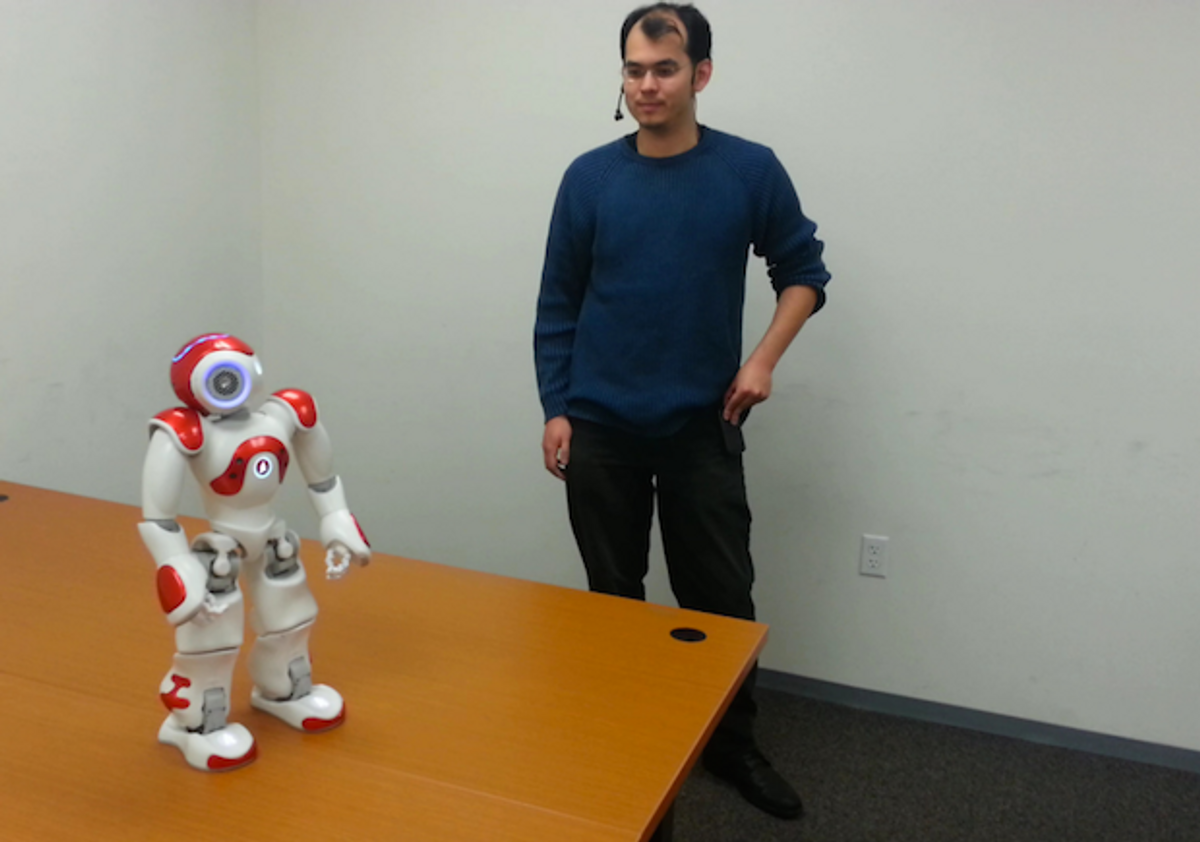The Three Laws of Robotics, from the 56th edition of the “Handbook of Robotics” (published in 2058), are as follows:
- A robot may not injure a human being or, through inaction, allow a human being to come to harm.
- A robot must obey the orders given it by human beings except where such orders would conflict with the First Law.
- A robot must protect its own existence as long as such protection does not conflict with the First or Second Laws.
Pretty straightforward, right? And it’s nice that obeying humans is in there at number two. Problem is, humans often act like idiots, and sometimes, obeying the second law without question is really not the best thing for a robot to do. Gordon Briggs and Matthias Scheutz, from Tufts University’s Human-Robot Interaction Lab, are trying to figure out how to develop mechanisms for robots to reject orders that it receives from humans, as long as the robots have a good enough excuse for doing so.
In linguistic theory, there’s this idea that if someone asks you to do something, whether or not you really understand what they want in a context larger than the words themselves, depends on what are called “felicity conditions.” Felicity conditions reflect your understanding and capability of actually doing that thing, as opposed to just knowing what the words mean. For robots, the felicity conditions necessary for carrying out a task might look like this:
- Knowledge: Do I know how to do X?
- Capacity: Am I physically able to do X now? Am I normally physically able to do X?
- Goal priority and timing: Am I able to do X right now?
- Social role and obligation: Am I obligated based on my social role to do X?
- Normative permissibility: Does it violate any normative principle to do X?
The first three felicity conditions are easy enough to understand, but let’s take a quick look at four and five. “Social role and obligation” is simply referring to whether the robot believes that the person telling it to do a thing has the authority to do so. “Normative permissibility” is a complicated way of saying that the robot shouldn’t do things that it knows are dangerous, or more accurately, that a thing is okay to do if the robot doesn’t know that it’s dangerous.
Now, let’s talk about how all of this stuff works in practice, in real interactions between humans and robots. The overall goal here is not just to teach robots when they should (and should not) follow orders, but also to provide a framework within which the robot is able to effectively communicate why it rejected an order. This is important, because it allows the human to provide additional instructions that might satisfy whichever felicity condition that caused the failure in the first place.
Here’s a simple example interaction, where the robot rejects a “walk forward” command since it violates a normative principle (the robot knows that it would fall off the table and hurt itself). Communicating this allows the human to modify the command, providing additional information to make the robot (for lack of a better term) more comfortable:
I hope the programming included a directive to not trust that human ever again after a failed catch.
Here’s another example scenario, in which a robot is instructed to walk into a wall that the human knows isn’t solid:
This last example shows a robot in a similar situation, except that it rejects a human command when the human and the robot don’t have the appropriate social relationship:
The second and third law of robotics get switched here, since the robot ignores orders from a human when those orders would lead to it harming itself.
Are we setting a dangerous precedent that could doom humanity? Sure, maybe. But it’s not realistic to expect that robots will ever unquestionably obey the laws of all humans they come in contact with: if we tried to do that with computers and software, it would lead to an enormous and destructive mess, and the present and future of robotics is no different.
“ ‘Sorry, I Can’t Do That’: Developing Mechanisms to Appropriately Reject Directives in Human-Robot Interactions,” by Gordon Briggs and Matthias Scheutz from Tufts University, was presented last week at the AI for Human-Robot Interaction symposium in Washington, D.C. You can read the full paper online here.
[ Tufts Human-Robot Interaction Lab ]
Evan Ackerman is a senior editor at IEEE Spectrum. Since 2007, he has written over 6,000 articles on robotics and technology. He has a degree in Martian geology and is excellent at playing bagpipes.



